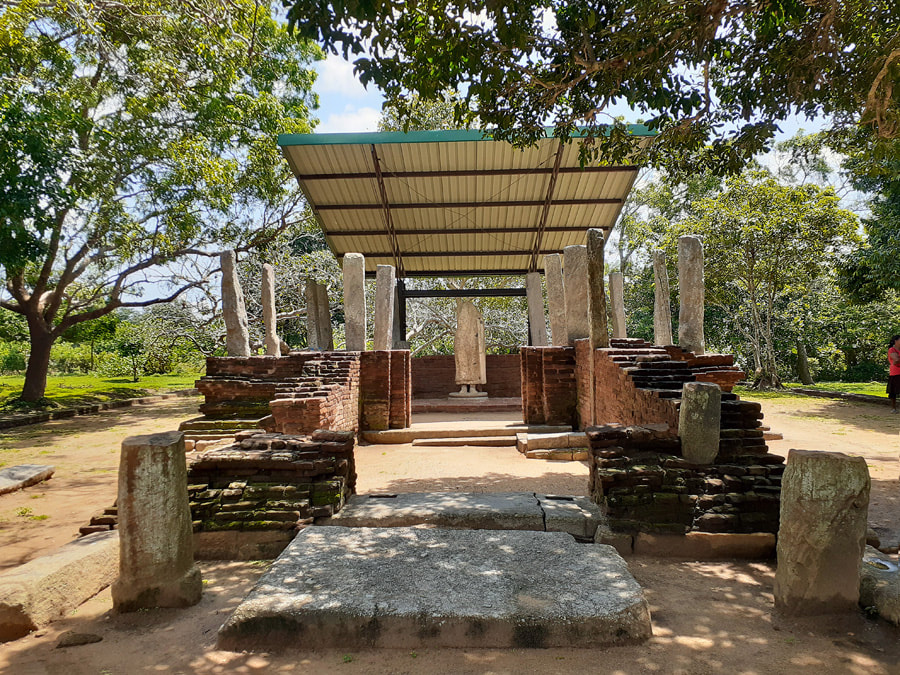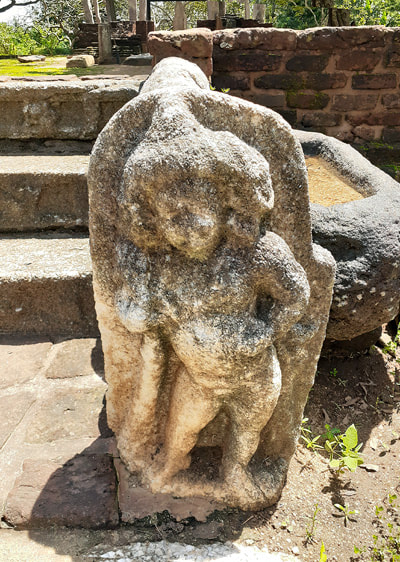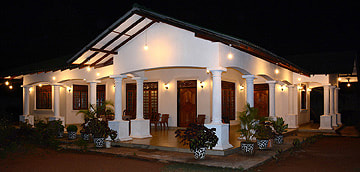|
a less-kown large excavation site in the Deep South of Sri Lanka - not far from Tangalle Though it is situated at the A18 main road, which is connecting the southern beach resorts such as Tangalle and Kirinda with the "elephant national park" Udawalawe and the "gem city" Ratnapura, the Rambha Viharaya (also transcribed "Ramba Vihara") is rarely visited by foreign travellers. To be honest, this archaeological site is not as amazing as the nearby rock and cave temple of Mulgirigala. And Situlpawwa in the Yala area might earn the fame of being a more fascinating ancient site, just due to its environmental settings. However the Rambha Viharaya is one of the largest excavated temple complexes in the southern plains of Sri Lanka, although not many Sri Lankans and foreign guests seem to be aware of this fact. What is now called the Rambha Viharaya once served as the main monastery of an ancient city named Mahanagakula, which was an important trading center in antiquity and became the capital of Sri Lanka's Deep South during the Polonnaruwa period. Even the nation's famous Tooth Relic is said to have been kept here for a while during the period of Indian Chola hegemony over the northern half of the island. The reputation of the "banana monastery" - which actually the literal meaning of "Rambha Viharaya" - remained to be far-reaching after the Polonnaruwa period, when even monks from Myanmar's world-famous temple-town Bagan sought advice from the monks residing here in southern Sri Lanka.
0 Comments
Leave a Reply. |
AuthorNuwan Chinthaka Gajanayaka, Categories
All
Archives
June 2020
Buddhism A-Z
|
|
Find a list of 270 Sri Lanka travel destinations & attractions: CLICK HERE Our illustrated list of places of interest is sorted by travel regions, more precisely: by 22 most recommendable places for overnight stays. All 270 sights are within day-trip distance from one of those 22 major locations. (Please understand: Loading 270 images requires more seconds than usual.) |
Why travel with Lanka Excursions Holidays?
+ We are a local agency owned and run by Sri Lankans, not part of international holdings
+ We are well known for our direct and personal relationships with travellers
+ We facilitate authentic meetings with locals who are not from the tourism sector
+ We follow a strict policy not to push guests to visit shops and shops and shops
+ We have an unrivalled expertise to show you places off the beaten path
+ We provide genuine information instead of clichés and tourism industry slogans
+ We are a local agency owned and run by Sri Lankans, not part of international holdings
+ We are well known for our direct and personal relationships with travellers
+ We facilitate authentic meetings with locals who are not from the tourism sector
+ We follow a strict policy not to push guests to visit shops and shops and shops
+ We have an unrivalled expertise to show you places off the beaten path
+ We provide genuine information instead of clichés and tourism industry slogans
Our ambition is to provide high-quality information in preparation of your Sri Lanka holidays
... and even more superb travel experiences
... and even more superb travel experiences
we also run our own guesthouse near Anuradhapura:
First House Mihintale
87, Missaka Mawatha, Mihintale 50300, Sri Lanka.
0094 71 6097795
87, Missaka Mawatha, Mihintale 50300, Sri Lanka.
0094 71 6097795
|
Lanka Excursions Holidays
Registration Number SLTDA/SQA/TA/02179
255/24, "Green Park" Dawatagahawatta, Thimbirigaskatuwa, Mahahunupitiya East, Negombo, Sri Lanka
Office: +94 31 223 991 Hotline: +94 71 6097795 [email protected] Lanka Excursions Holidays office hours 8.00 to 6.00 p.m. daily (except from June Fullmoon Day)
|
if not stated otherwise, texts and photos provided by Ernst A. Sundermann, sales manager of Lanka Excursions Holidays
all rights reserved, © 2016 Lanka Excursion Holidays
all rights reserved, © 2016 Lanka Excursion Holidays


 RSS Feed
RSS Feed



